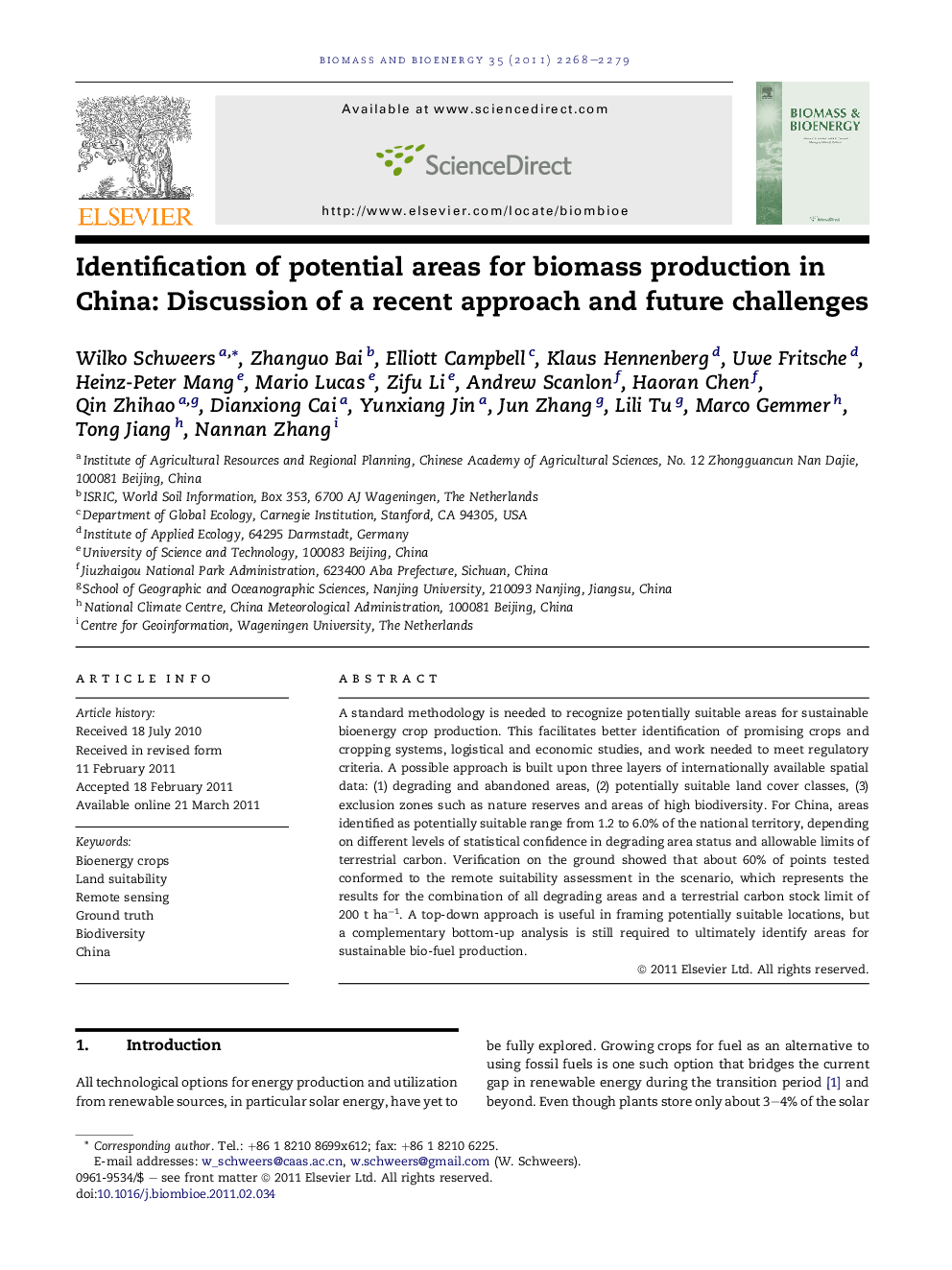| Article ID | Journal | Published Year | Pages | File Type |
|---|---|---|---|---|
| 677777 | Biomass and Bioenergy | 2011 | 12 Pages |
A standard methodology is needed to recognize potentially suitable areas for sustainable bioenergy crop production. This facilitates better identification of promising crops and cropping systems, logistical and economic studies, and work needed to meet regulatory criteria. A possible approach is built upon three layers of internationally available spatial data: (1) degrading and abandoned areas, (2) potentially suitable land cover classes, (3) exclusion zones such as nature reserves and areas of high biodiversity. For China, areas identified as potentially suitable range from 1.2 to 6.0% of the national territory, depending on different levels of statistical confidence in degrading area status and allowable limits of terrestrial carbon. Verification on the ground showed that about 60% of points tested conformed to the remote suitability assessment in the scenario, which represents the results for the combination of all degrading areas and a terrestrial carbon stock limit of 200 t ha−1. A top-down approach is useful in framing potentially suitable locations, but a complementary bottom-up analysis is still required to ultimately identify areas for sustainable bio-fuel production.
► Spatial information on degrading and abandoned land is essential for identification of potentially suitable bioenergy crop production areas. ► Land degradation processes can be identified by NDVI trend analysis, corrected for climate variability. ► Ground truth observations are conveniently based on recent high-resolution land cover or land use data.
